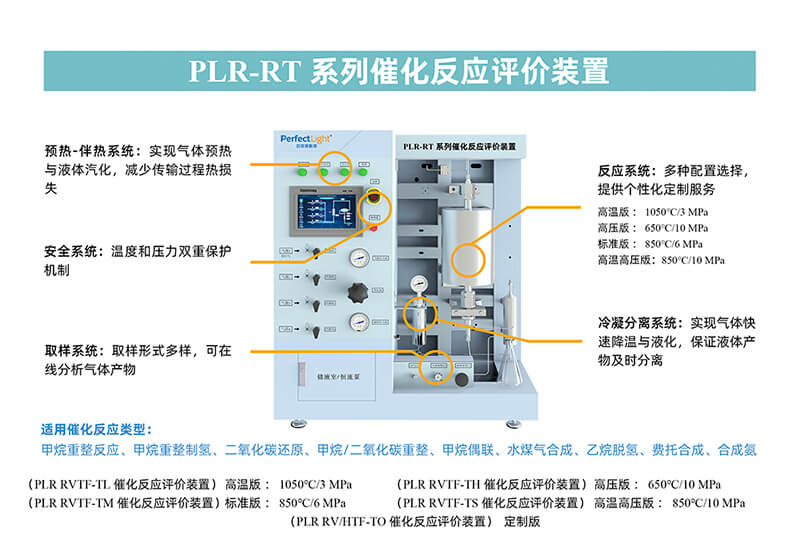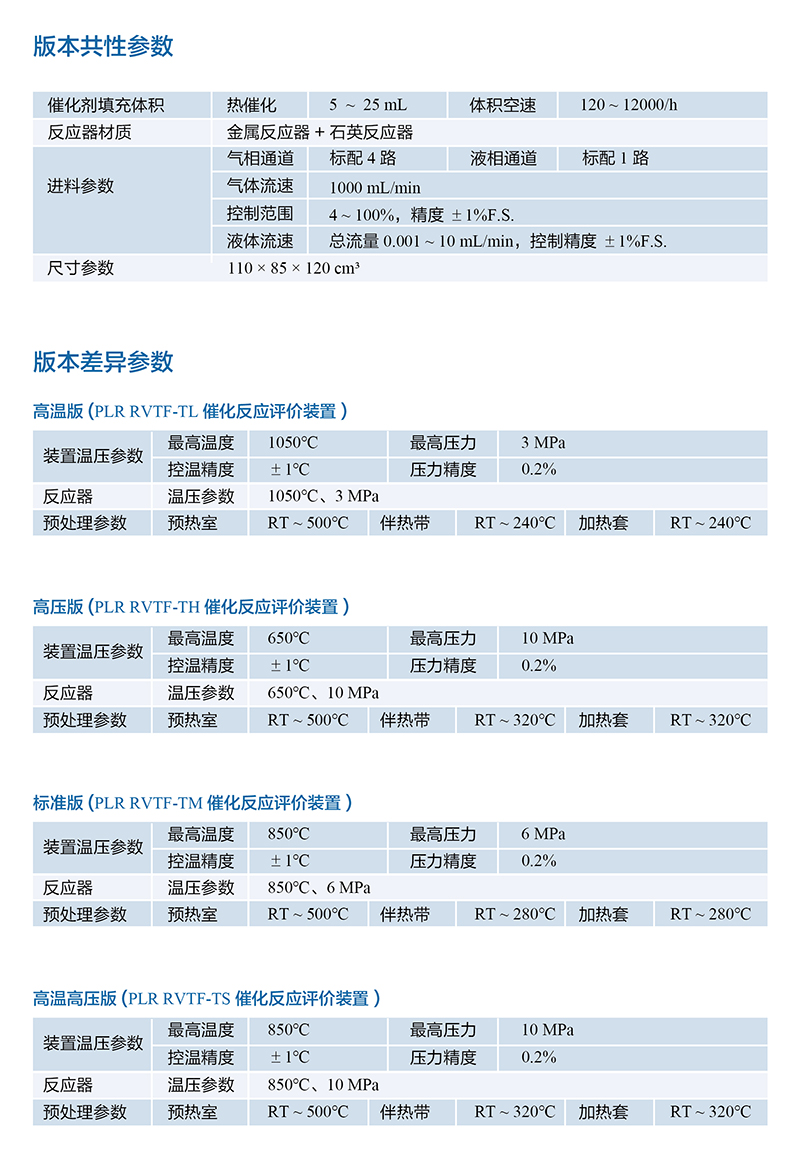Chemical reactions are primarily activated by heating, providing the energy to overcome thermodynamic barriers and drive the transformation of reactants into products. Introducing appropriate catalysts during the reaction process can adsorb and activate reactant molecules, alter the chemical reaction pathways, and reduce the activation energy of the reaction, making it easier to proceed.
In typical catalytic reaction systems, catalysts play a role in lowering the activation energy of the reaction, making the reaction more likely to occur.
From a reaction kinetics perspective, high temperatures can activate reactants, increase reaction rates. However, from a thermodynamic equilibrium perspective, high temperatures are not favorable for exothermic reactions like ammonia synthesis. Elevated temperatures can shift the equilibrium towards reactants, reducing yield. Additionally, excessively high temperatures can cause catalyst sintering, leading to decreased catalytic activity and impacting reaction rates.
High pressure can accelerate molecular collisions, increase reaction rates, shift the reaction equilibrium towards reduced gas molecules, and facilitate gas liquefaction, resulting in higher yields of reactions producing liquid products. Therefore, for specific reactions, finding appropriate catalysts and adjusting reaction temperature and pressure can control reaction activity, selectivity, and yield, providing theoretical guidance for industrial-scale synthesis, which is a focus in the field of catalysis technology.
Perfectlight Technology introduces the PLR-RT series catalytic reaction evaluation device, providing a platform for systematic research of catalytic reactions. Its precise temperature and pressure control system ensures the repeatability of each reaction, and real-time pressure and temperature monitoring better replicates chemical reaction processes, meeting the requirements of conventional gas-solid phase catalytic reactions.

▲ Especially suitable ● Rather suitable ○ Can be used
▲ Catalyst material atmosphere sintering
▲ Activity assessment of catalyst materials
▲ Gas-solid phase catalytic reactions
▲ Methane reforming for hydrogen production
▲ Carbon dioxide reduction
▲ Methane/carbon dioxide reforming
▲ Methane coupling
▲ Water-gas shift reaction
▲ Ethane dehydrogenation
▲ Fischer-Tropsch synthesis
▲ Ammonia synthesis
High-precision flow control ensures constant gas flow rate
The PLR-RT series catalytic reaction evaluation device features four gas flow paths, three reaction gas flow paths, and one cleaning purge gas path. Each gas path can be precisely controlled. Compared to other flow control methods like float flow meters and pressure reducing valves, the flow control accuracy is as high as ±1% F.S., ensuring the repeatability of each experiment and reproducibility between different equipment.
Flow meters are available in three ranges: 200/500/1000 mL, meeting the needs of different reaction volumes.
Cleaning purge gas can be used to purge the entire reaction system before and after each experiment, solving cross-contamination issues between two experiments and extending the life of the reactor and the tubing.
Multi-stage temperature management system for precise temperature control
The PLR-RT series catalytic reaction evaluation device has a gas preheating system in front of and behind the core reaction system, ensuring precise temperature control while reducing the impact of high temperatures on gas measurement accuracy.
Gas preheating system rapidly heats the reaction feed gas to the temperature required for the reaction before it enters the reactor, reducing the reaction preparation time. To minimize heat loss during gas transfer, a pipe heating structure is added to ensure that the gas feed into the reactor is at the desired reaction temperature. The gas preheating system ensures that the reaction feed gas enters the reaction chamber at a high temperature, allowing it to reach the set reaction temperature quickly, reducing the burden on the reaction system and ensuring temperature accuracy.
Reaction system has a maximum heating power of 1.3 kW, allowing rapid heating of the reaction feed gas to the required reaction temperature in a short time. The furnace body is made of high-temperature silicon carbide material, and the gap between the furnace shell and the furnace chamber is filled with thermal insulation material to reduce heat loss from the reaction furnace and improve energy efficiency.
The preheating system and reaction system have a 16-stage program temperature control mode, allowing for the determination of the initial reaction temperature in a single experiment and the study of reaction rates and conversions at different reaction temperatures. This ensures that every bit of thermal energy is used effectively.
To prevent damage to end-point detection devices such as chromatographs or mass spectrometers by high-temperature substances produced in the reaction system and to reduce the impact of high temperatures on gas measurement accuracy, the PLR-RT series catalytic reaction evaluation device features a condensation separation system between the reaction system and the end-point detection device.
Condensation separation system quickly cools the gas output from the reaction system and condenses and separates liquid reactants or products, effectively reducing the damage of high temperatures and liquid substances to subsequent detection devices, backpressure valves, and other components, improving gas detection accuracy.
Four functional modules for quantitative liquid reaction and separation
To allow liquid reactants to participate in the reaction, the PLR-RT series catalytic reaction evaluation device is designed with four functional modules: liquid delivery-vaporization-pipe heating-condensation separation.
The liquid delivery system uses a high-precision high-pressure liquid plunger pump to ensure that the liquid rate into the preheating chamber can be maintained at any value between 0.001-10 mL/min for a long time under high pressure.
The liquid preheating chamber is designed with a special vaporizer structure to effectively avoid problems such as large vaporizer volume, unstable gas output after vaporization, and real-time vaporization, ensuring a stable output of the liquid-vapor mixture.
The pipe heating structure effectively prevents liquid condensation before entering the reaction chamber.
The condensation separation system after the reaction can quickly condense unreacted liquid feedstock and liquid products produced in the reaction into the separator for collection, which is used for subsequent analysis of the reaction process.
Flexible and diverse configurations, offering customized services
The PLR-RT series catalytic reaction evaluation device offers various configurations from different dimensions such as reactor, reaction temperature, and reaction pressure to meet the requirements of catalytic reactions with different reaction rates and conditions.
Reactors are available in two types: vertical and horizontal furnaces.
For different reaction temperatures and pressure conditions, various specifications are available:
High-temperature version: maximum reactor temperature of 1050°C, maximum gauge pressure of 3 MPa
Standard version: 850°C, 6 MPa
High-pressure version: 650°C, 10 MPa
Customized version: selectable from 650, 850, 1050, and 3, 6, 10 MPa
If the above configurations still cannot meet the requirements of the reaction, Perfectlight Technology also offers customized services for the device to create the most suitable catalytic reaction apparatus.
Secondary alarm function for experiment safety
The PLR-RT series catalytic reaction evaluation device has a dual protection mechanism for temperature and pressure, with over-limit protection in hardware and software, ensuring the safety of photo-thermal reactions.
In case of safety issues such as leakage, malfunction, or pressure over-limit during the experiment, the system automatically initiates a chain of protective measures.
For temperature, there are two levels of alarm: an audible and visual alarm when the temperature exceeds the first set value, and automatic heating shutdown when the temperature exceeds the second set value.
For pressure, an audible and visual alarm is triggered when the pressure exceeds the set value, and material feeding is stopped.
Various sampling methods, enabling online gas product analysis
The PLR-RT series catalytic reaction evaluation device has a separate gas phase calibration port suitable for gas calibration. The device offers various sampling methods, such as gas online feeding/sampling, intermittent gas sampling, and liquid sampling. It can be paired with front-end pressure reduction devices and back-end detection devices (mass spectrometers, gas chromatographs, etc.) to achieve online reaction process analysis and full detection of reaction products.

Note: Specific device material flow rates and catalyst loading are subject to adaptation for the specific reactor. For details, please refer to the reactor specification and selection table.